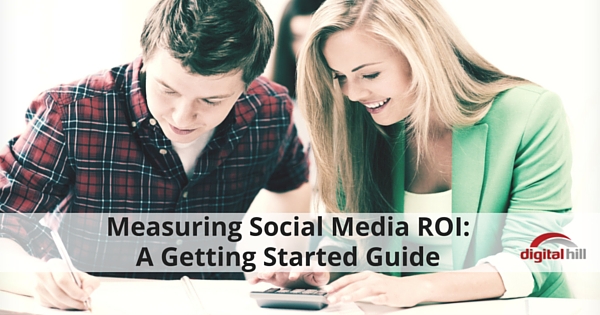Measuring Social Media ROI: A Getting Started Guide

Social media offers an essential and inexpensive opportunity for small businesses to market products and services. A campaign can be targeted, personalized and can reach customers in ways that traditional channels cannot. Social media allows quick feedback while frequently engaging the most powerful marketing tool of all: word-of-mouth.
Social media marketing is free but not really free. Let me explain…Gaining even marginal attention on Facebook or Twitter requires time and planning. Unlike those multi-million dollar Super Bowl commercials viewed by millions, the success of your social media is all about timing and in many cases paid promotion.
What Is Social Media?
Social Media (SM) marketing involves distributing your message on mainstream social networks like Facebook, Twitter, Pinterest, YouTube, and Instagram. These networks allow you to present your products in direct, visual and interpersonal ways. Since marketing budgets are limited, determining whether your efforts are paying off is key. A regular analysis will help you understand what’s working and what’s not, where future assets should be applied, and how to shape your future strategy.
Formula for Return on Investment (ROI%) of Social Media Marketing
ROI % = ((SM Return – SM Expenses) / Social Marketing Expense) x 100
How Is Return Measured?
Calculating return on social media marketing is a bit more difficult than measuring the cost. If you’re counting direct online sales, you’re only examining a portion of SM effectiveness. SM Marketing is long-term, brand-building and affects consumer behavior over time. Putting this into numbers is challenging, but one approach is to assign the impact to two groups: direct and indirect.
Direct Consumer Response can be measured by the amount of product sold that is traceable to the consumer’s visit to a website.
Indirect Consumer Responses are responses that are not necessarily connected to an immediate sale but enhance long-term brand awareness. Consumer actions or “impressions” include page views, email list signups, downloads, “likes” on Facebook, comments, leads, calls, and feedback determines the amount of “notice” you’re receiving. According to social media platform, Pagemodo, companies can convert these actions into a calculated cost that would be comparable to the cost of exposure if you were to buy, rather than earn, the same number of impressions on other media. This factor is known as EVE, estimated value of exposure.value of exposure. For example, if you paid $1.00 per 1000 impressions for 50,000 impressions, then the EVE return would $50.
Quantifying the Investment
Understanding the extent of your investment in social media marketing over a given period is easier to quantify than the specific return. Much of the marketing activity that takes place on social media is often considered “free” though the efforts are time-investing. Obviously, time has a value, and if a $50,000 employee (or yourself) spends 10% of their time focused on social media and planning, then the starting point begins at $5,000. The costs of overhead which includes the computers, software, utilities, and so on, plus advertising expenses not pertaining to traditional advertising should be included. So add these up and you’ll have the “Investment” portion of ROI.
ROI Calculation
As an example,
- plug in a total SM return = $5,000
- subtract the calculated SM cost = $4,000
- divide by the total the SM cost = $5,000 / $4,000 = 1.25
- multiply by 100 for your ROI as a percentage = 125%
In this example, for each $5.00 spent on social media, the return should be $6.25.
I hope this gets you started on the road to measuring your social media marketing. If you have any questions please ask them in the comments and we’ll get back to you!